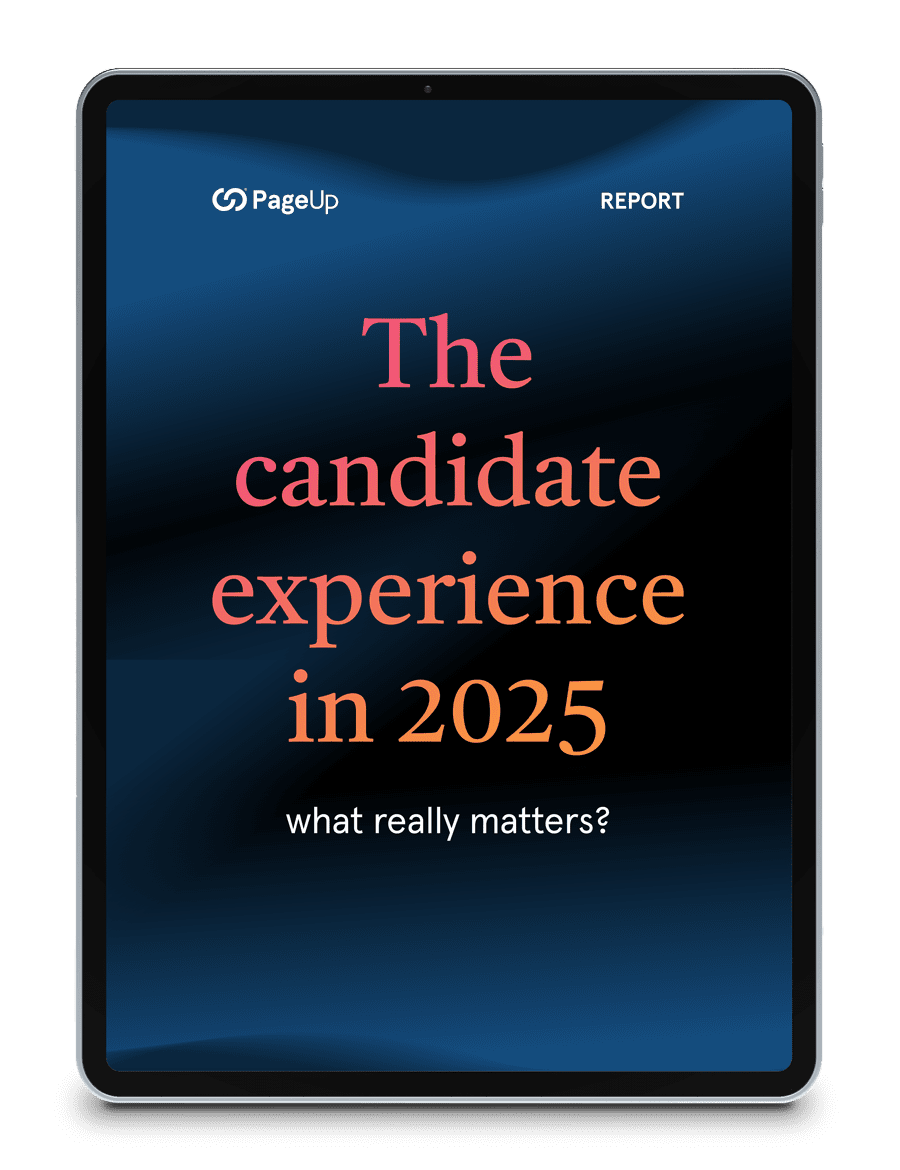Finding the best talent and enticing them to join your organisationorganization is tougher than ever. More often than not, hiring teams settle for ‘just okay’ rather than great – because that’s who’s available when they need the role filled.
These days, the best people don’t look for jobs – jobs find them.
To win the talent they need, savvy recruiters are adopting a strategic mindset to attract more of the right kind of people to their organisationorganization – and they’re using recruitment marketing to do so.
What’s recruitment marketing? A short explainer
Recruitment marketing lets you attract, engage, nurture and convert great candidates by showing them content that convinces them to hit ‘apply’. It’s definitely a buzzword right now – but what does it actually mean? And how does it help HR teams get what they really want: the right people, in the right role, at the right time?
In short, recruitment marketing helps companies use marketing strategies like job advertisements, social media, careers sites, employee-generated content, proactive outreach and targeted communication to attract top talent. It takes your existing talent attraction activities and makes them more effective, connecting the dots between them to create a personalisedpersonalized and engaging candidate experience.
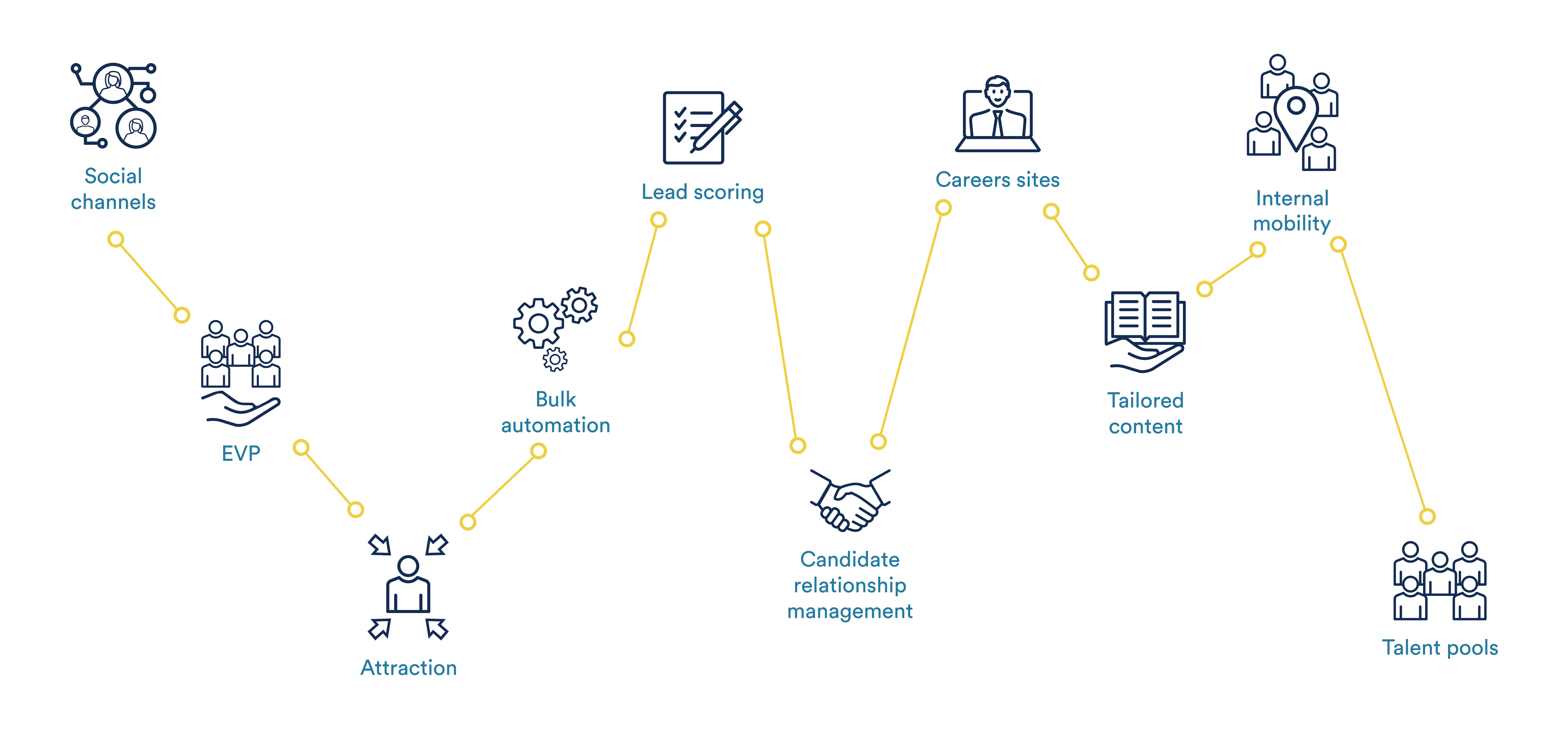
The best people often aren’t looking for jobs —but they’re open to the right role if it presents itself. Over 75% of professionals are passive candidates (not actively looking for a role but open to new opportunities). More than ever, recruiters are tapping people on the shoulder, and they’re using recruitment marketing to do so.
Some common recruitment marketing tactics include:
- Search Engine OptimisationOptimization
- Employee generated content
- Compelling site content
- Social media marketing
- Targeted recruitment campaigns
- Leveraging analytics to determine the performance of sourcing channels and improve approaches
- Proactive sourcing
Recruitment Marketing by the numbers
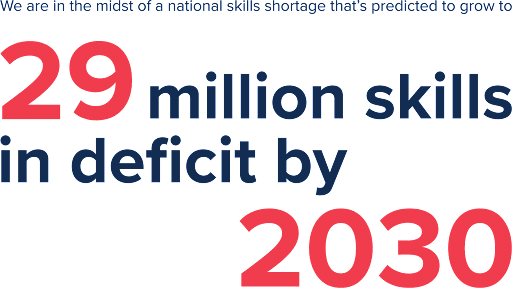
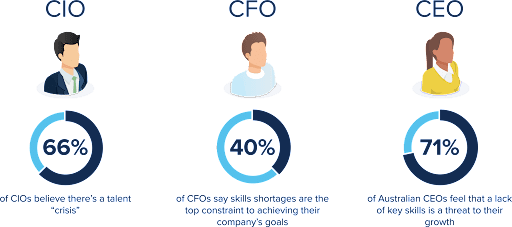
Recruitment marketing improves candidate experience to help you win the best talent
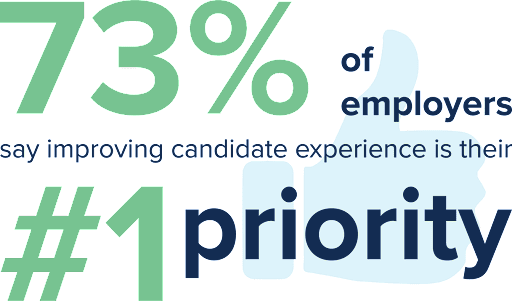
![]()
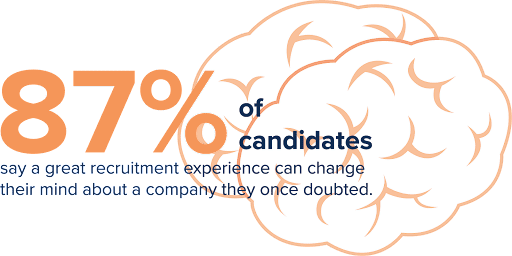
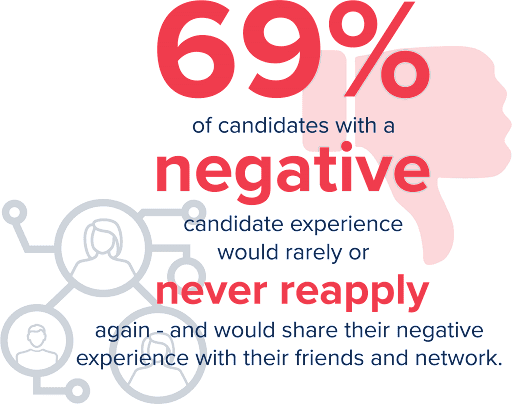

In this blog, we’ll cover the following key considerations and strategies.
WHY DO I NEED TO START DOING IT? Recruitment marketing ensures you are attractive to active jobseekers and passive candidates you want to recruit. It forms the backbone of a proactive sourcing strategy by helping you develop an influential employer brand, optimisedoptimized your careers site to capture and convert quality candidates, understand what content your target audience is interested in, and nurture talent pools year-round. It helps you amplify your content and your employer brand to reach the right candidates at-scale.
GETTING STARTED: A STEP BY STEP APPROACH A deep dive into how you can get started and implement these approaches in your own organisationorganization. It’s important to have clear and measurable goals that are clearly aligned to your overall recruitment strategy before you start. We’ll outline a few key focus areas for you to focus on as you’re starting out, and take you through building a business case for recruitment marketing.
STRATEGIES TO EMPLOY How do you bring these goals and focus areas to life? Some key recruitment marketing strategies you can employ include creating content catered to each candidate segment, choosing the right channel and getting in front of candidates with proactive attraction.
HOW TECHNOLOGY CAN HELP These strategies are all high-touch in nature, which makes for a great candidate experience, and a huge amount of work for hiring teams. Technology is your secret weapon here, automating personalisedpersonalized communications, learning what content different candidates interact with, and nurture talent pools behind the scenes. Recruiters have time to make strategic decisions and improvements.
MEASURING AND METRICS Reporting and knowing what data and metrics to track can be overwhelming. The key is to keep it simple, look at your overall recruitment strategy and the problems you are trying to solve. Once you know which metrics to measure, you’ll be able to see where you’re tracking well, and identify areas for improvement.
Chapter 1: Why do I need to start using recruitment marketing?
Competition for talent is more intense than ever before, and recruitment marketing ensures you are attractive to active jobseekers and passive candidates you want to recruit. Recruitment marketing forms the backbone of a proactive sourcing strategy by helping you:
- Develop an influential employer brand – not just one with mass-market appeal
- Segment candidates into talent networks with tailored campaigns and communication
- Reach your audience at-scale and understand what content they’re engaging with
- OptimisedOptimized your careers site to capture and convert quality candidates
- Amplify employee advocacy with employee-generated content
- Nurture talent pools to keep them warm year-round
Perhaps most importantly, recruitment marketing doesn’t just give you more candidates. It provides you better candidates. With engaging content tailored to your ideal hire, candidates can decide whether you’re the right fit for them.
“You want more of the right-fit candidates self-selecting into your recruitment processes, and more of the wrong-fit candidates to be self-selecting out,” says employer brand coach Margie Kwan. “You want engaging content that educates talent about your company’s core values, your culture and your work environment. People who disagree with this will self-select out and this is a great way for you to elevate your candidate quality.”
Reach the right candidates
Recruitment marketing helps you amplify your content to reach candidates at-scale. When you produce high-quality, valuable content, candidates will engage and share it with their networks. This gets your employer brand in front of even more eyeballs!
But when producing content, a ‘spray and pray’ approach won’t drive results. You’ll need to consider your target audience, what their interests and pain points are, and how your employee value proposition will shine through in each piece of content.
Recruitment marketing can help by segmenting candidates into groups that you can target with tailored content. Recruitment tools powered by AI and machine learning can even curate relevant content for each visitor to your careers site based on their previous browsing history.
Chapter 2: Getting started with recruitment marketing – a step by step approach
Now that we’ve discussed what recruitment marketing is and why it’s so important, let’s take a deep dive into how you can get started and implement these approaches in your own organisationorganization. Use the worksheet on the next page to help you as you read through this chapter.
Set your recruitment marketing goals
Before you start to implement recruitment marketing approaches, it’s important to have clear and measurable goals that are aligned to your overall recruitment strategy. Missing this crucial step means you’re not focusing on what’s important to the business – and you won’t have the impact you desire.
Some common goals include:
- Create a compelling employer brand that attracts high-quality talent
- Nurture candidates by automating recruitment workflow and candidate communications
- Build rich talent pipelines in targeted talent segments
- Drive internal mobility by increasing the % of internal hires
- Engage alumni (ex-employee) talent for future hiring
- Deliver to ‘Diversity and Inclusion’ initiatives
- Reduce time to present to hiring managers for hard to fill roles
- Reduce recruitment agency spend
Once you’ve outlined these goals, develop the recruitment marketing tactics including the metrics that demonstrate you are delivering to these outcomes. For example, if your goal is to find more candidates for hard-to-fill roles in IT, your Recruitment Marketing goals may be to add 100+ leads to your talent pipelines in IT.
Focus areas
How are you going to achieve these goals? When starting out, it’s important to hone in on a few key focus areas – rather than trying to achieve everything at once. We recommend you start by planning out the workforce you need now and for the future.
Here are five steps to follow as you plan to implement recruitment marketing:
1. Identify which positions are critical to success (today and for the future)
Get your key stakeholders – the hiring managers and business leaders – onboard for input. Getting buy-in from the beginning will help to successfully implement any new recruitment marketing processes. Together you need to identify which positions are most critical to your success. Large organisationsorganizations – such as telecommunications companies – can have as many as 32 different talent segments across 24+ countries. It’s important to get a clear idea of how you’re communicating to each of these talent segments.
2. Focus on these talent segments
Narrow in on those talent segments that are most critical to your future business and focus your efforts here, otherwise the task will be too overwhelming. To identify these key talent segments, ask yourself:
- Which roles are hardest to fill?
- Which talent segments are most critical to our business?
- Which talent segments do we do the most hiring in?
- Which talent segments are the hardest to retain?
- Which talent segments take the most time to hire?
Establish personas for each segment that speak to the kind of candidates you’re trying to attract. This will inform your content strategy later on.
3. Build a cross-company working group
Bring together a small cross-company working group to identify what you are currently doing to attract, engage and retain your key talent segments. Consider whether your current approaches are enough to deliver a great candidate experience that allows you to compete in future. If your approaches are not delivering a personalisedpersonalized, high-touch candidate experience, then you’ll need to have enough data to create a case for implementing recruitment marketing. Go back to your executive team to try and secure the appropriate level of support, resources and investment to develop a recruitment marketing strategy.
4. Market research
Take the time to undertake market research on your key talent segments before you get started. This helps you understand your audience, their needs and motivations to develop an approach informed by actionable insights. For those who don’t have the budget to do market research, there are simple things that can be done inhouse. If you currently have the target audience within your organisationorganization, you can leverage these people to help you. Surveys, focus groups, or even human centred design sessions with these employee segments can be a fast way of capturing great insights. Leverage your people – they’re a captive audience which is usually not tapped. If the task seems too large and overwhelming, start with just one or two of your talent segments – the most critical. Learn from the process, then move onto the next, bringing across those improvements.
5. Shift from reactive to proactive recruitment using automation
Successful recruitment marketing relies on candidate personalisationpersonalization, drip-fed content, high-touch communication, and sophisticated analytics to track what’s working well and what needs to be improved. This is almost impossible to achieve with manual processes alone – not to mention the countless hours it would take recruiters to personally target, track and drip-feed content to each candidate along the way. Technology can automate a great candidate experience at-scale, taking the reliance off human effort and freeing recruiters up for value-added, strategic activities – rather than ‘busy’ work. Automation is the key that allows recruiters to shift from reactive to proactive recruitment. Without it, recruitment teams are too busy filling roles as they arise and completing manual tasks to even think about strategically planning for the future and proactively targeting the talent they need.
Recruitment Marketing worksheet
Competition for talent is more intense than ever before, and recruitment marketing ensures you are attractive to the jobseekers you want to recruit.
Planning
What are your goals? It’s important to have clear goals in mind before you start to implement recruitment marketing approaches. Some common goals include: Improve employer brand, fill hard to fill roles faster, capture more quality candidates.
Goal 1
Goal 2
Goal 3
What recruitment marketing approaches will you use? Once you’ve outlined these goals, list the recruitment marketing approaches you’ll use to achieve them. For example, if your goal is to find more candidates for hard-to-fill roles in IT, your Recruitment Marketing goals may be to add 100+ leads to your talent pipelines in IT.
Approach 1
Approach 2
Approach 3
Focus areas: How are you going to achieve these goals? It’s important to hone in on a few key focus areas – rather than trying to achieve everything at once. We recommend you start by planning out the workforce you need for the future.
What is the workforce we need for the future?
Where are the skill gaps?
What key talent segments do we need to focus on attracting?
Implementation
Follow these 5 steps to successfully implement recruitment marketing:
1. Identify which positions are critical to success
Get your key stakeholders – the hiring managers and business leaders – onboard for input. Together you need to identify which positions are most critical to your success.
2. Focus on these talent segments
Narrow in on those talent segments that are most critical to your future business and focus your efforts here. Establish personas for each segment that speak to the kind of candidates you’re trying to attract. This will inform your content strategy later on.
3. Build a cross-company working group
Bring together a cross-company working group to identify what you are currently doing to attract, engage and retain your key talent segments. Go back to your executive team to try and secure the appropriate level of support, resources and investment to develop a recruitment marketing strategy.
4. Market research
Take the time to undertake market research on your key talent segments before you get started. This helps you understand your audience, their needs and motivations to develop an approach informed by actionable insights.
5. Shift from reactive to proactive recruitment with automation
Technology can automate a great candidate experience at-scale, freeing recruiters up for strategic activities.
Strategies to employ
Once you’ve identified your key talent segments, you’ll want to start engaging them with tailored content.
Create content catered to each candidate segment
Refer back to the talent segments you identified earlier. Each persona will have different needs, goals and motivators. Your content should showcase your value proposition in a way that addresses these different perspectives and gives each persona the information they need to progress down the candidate funnel.
Choose the right channel – go where the talent is
What channels and networks do your target candidate segments spend time on? Which are they likely to use for social sharing – and which are used to cultivate professional networks?
Get in front of passive candidates with proactive attraction
Transitioning from reactive recruitment to proactive attraction requires applying a marketing mindset to get in front of passive talent, tap them on the shoulder and entice them to work for your organisationorganization.
Target your ideal candidate at every stage of the journey
Engage candidates at all stages of the consideration cycle, so that when the time comes when they’re open to a move, you’re their preferred employer – or at least an option they will consider. Create segment based go-to-market plans that move key audiences along the consideration journey and down the funnel.
Use technology to automate a great candidate experience
Recruitment marketing technology can automate candidate communication and candidate care, serve up curated and tailored content, track what’s working and what can be optimiseoptimize – freeing recruiters to focus on strategic decision-making.
Use metrics and measuring to improve
Tracking metrics will help you monitor and tweak your marketing efforts, adjusting as necessary until you get the results you’re after.
Chapter 3: Recruitment marketing strategies
Let’s get cracking! How do you bring these goals and focus areas to life? Once you’ve identified your key talent segments, you’ll want to start engaging them with tailored content. Here are some key recruitment marketing strategies you can employ to get started today.
Create content catered to each candidate segment
Great content showcases your EVP, introduces jobseekers to your culture, and helps people decide whether or not they want to apply to work at your organisationorganization. But great content marketing doesn’t start with the content: it starts with your business and talent objectives.
Before you get excited and start producing lots of content, it’s important to think about who you are trying to engage with your content, the type of content that will resonate with them, and what channels you will use to distribute this content.
Many organisationsorganizations make the mistake of adopting a one size fits all approach – which has limited effectiveness. Without defined audiences and insights on what makes them unique, these organisationsorganizations are creating generalisedgeneralized content that doesn’t speak to people’s real pain points or motivators.
Refer back to the talent segments you identified earlier. Each persona will have different needs, goals and motivators. Your content should showcase your value proposition in a way that:
- addresses these different perspectives
- gives each persona the information they need to progress down the candidate funnel.
- is authentic and showcases what it’s really like to work at your company
The most important consideration when creating content is making it authentic. Post-pandemic, employees are more suspicious of corporate communications around things like work-life balance, flexibility and benefits. Research shows 61% of candidates are more sceptical of what employers say about themselves than before the pandemic.
Leading employers are harnessing employee-generated content to promote authenticity and give jobseekers an insider’s view of what it’s like to work at their company. Employee-generated content like testimonials, videos, and day-in-the life insights is 200% more effective at engaging jobseekers than regular content. That’s because jobseekers want to hear from real people —not corporate messaging —about everyday life at a company. If you want to harness employee-generated content, there are tools available that let you build a team of brand ambassadors and empower them to share videos, insights and testimonials. This gives talent teams the power to create and share authentic content at-scale, with minimal effort.
So you’ve started to create authentic, personalisedpersonalized content that speaks to your target talent segments. The next step is delivering the right content via the right channels.
Choose the right channel: go where the talent is
What channels and networks do your target candidate segments spend time on? Which are they likely to use for social sharing – and which are used to cultivate professional networks? Gathering these insights before you begin forms the basis of a successful long term employer brand strategy. Your employer brand in turn does the heavy lifting by attracting the talent you need to build the workforce of the future.
If an organisationorganization invests in doing this properly, there can be amazing benefits and cost savings – a great employer brand attracts more of the right people, faster.
One company was focused on creating content and publishing to Facebook and Instagram to attract candidates, however the audiences they wanted to attract were more senior roles in R&D and supply chain logistics. These candidates don’t typically spend much time on those social channels, so their content campaigns weren’t giving them the ROI they needed. Even if you have the best content and a huge advertising budget, if it’s not being delivered via the right channels it won’t be seen by the right people – and won’t deliver the results you’re after.
Get in front of passive candidates with proactive attraction
It’s not just jobseekers that you need to be targeting. Remember, 75% of professionals are passive candidates who are often perfectly happy in their roles. With proactive attraction strategies, you can ensure you’re top of mind when that’s no longer the case.
But most organisationsorganizations are still stuck in a reactive recruitment mindset: filling roles as they arise with the applicants they have on hand. That’s not how you find the best people for your organisationorganization, and traditional recruitment and sourcing tactics are becoming less effective in getting a response from in-demand talent.
Transitioning from reactive recruitment to proactive attraction requires applying a marketing mindset to get in front of passive talent, tap them on the shoulder and entice them to work for your organisationorganization.
“A good recruitment marketing strategy establishes and nurtures relationships with talent even before they’re looking for their next role,” says Kwan. “You’re building awareness and trust in your brand, and this is the first step to get on the radar of passive talent.”
“Candidates make career decisions in the same way that they make other buying decisions – this means they are hungry to educate themselves on your organisationorganization and they will spend time researching your company, the products, services and the role so they can decide whether you’re a good fit.”
In the above candidate funnel, organisationsorganizations market themselves to potential talent to build awareness and consideration. Later down the road, this passive talent can be converted into an applicant when the right role arises.
Increasing the awareness of your company as an employer of choice will widen the top of the funnel, allowing a greater flow of talent through each hiring stage. This ultimately increases the number of qualified and suitable candidates at the bottom of the funnel. This will ensure your recruitment teams are filling roles with the best talent in the marketplace, reducing the time it takes to do that, and allowing them to focus on providing the best possible experience to candidates and hiring managers.
Use recruitment marketing to target your ideal candidate at every stage of the journey

Your ideal candidate is probably working for someone else right now. They’re a highly-skilled, in-demand person who starts the year happy in their job and is not considering a move. Perhaps by mid year they start to get an itch, or the transformation going on in their company has led them to feel less secure in their current role. Towards the end of the year, they begin to look around for a new job and sign up for some job alerts. If you haven’t been maintaining regular touchpoints with them throughout this time, you’ll likely miss out on this talent again.
This person is a viable target for employers at any point on this journey. The idea is to engage with them at all stages of the consideration cycle, so that when the time comes when they’re open to a move, you’re their preferred employer – or at least an option they will consider.
Think about it from a content perspective. If at the start of the year you serve up an ad or a post on social media about a specific job, there is a very high chance that this ideal candidate would flick straight past and not click.
However, if you posted an article about the awesome things your company is doing in A.I. (or relevant trending topic within their industry) then there is a much higher chance that person will click on your ad or post.
To be most effective, you need to be in the right place, at the right time, with the right message at each stage of the candidate funnel. For example, if you want to build out your approach for the ‘attraction/ marketing’ stages, you can create segment based go-to-market plans that move key audiences along the consideration journey and down the funnel.
Case study: Sportsbet’s ‘The Draft’ program
After using PageUp Recruitment Marketing to build an engaging, on-brand careers site, Sportsbet now relies less on recruitment agencies and job boards to source talent.“Since then, we have reduced our time to fill to by an average of 15 days across the business. We’ve also dramatically reduced our utilisationutilization of agencies to 12%,” says Sportsbet Head of Talent Simone Strachan.
A recruitment campaign called ‘The Draft’ resulted in 550 applications and 5 hires for tech, data engineering and analyst roles. This was all done through Sportsbet’s new career site, without having to rely on agencies or post a single ad on job boards.
To draw the right applicants in, Sportsbet creates dedicated landing pages for each target talent segment. Software engineers get served content around Sportsbet’s modern tech stack, and the exciting projects in development. Data Scientists see thought leadership content and testimonials from passionate team members. Sportsbet uses these landing pages to attract their target audience to the careers site, then captures their details with custom calls to action (CTAs) like “Join our talent community”. Upon receiving these candidate details, Strachan can place them in a talent pool and nurture them with relevant content until a suitable role arises.
Chapter 4: Recruitment marketing technology
The above strategies are high-touch in their personalisedpersonalized communications. This provides a great candidate experience, but also requires huge amounts of manual effort to create nurture streams, follow-ups and targeted content. Here’s where recruitment marketing technology plays a starring role: automating candidate communication and candidate care, empowering employees to tell authentic stories, serving-up curated and tailored content, tracking what’s working and what can be optimisedoptimized – while freeing up recruiters to focus on strategic decision-making.
The key to successful recruitment marketing is in the data. Recruitment marketing uses this data to help you measure and maximisemaximize your recruitment marketing ROI. If you want to know what’s working (and what’s not), you only have to look at the analytics behind each of your marketing activities. More importantly, it can help you understand candidate behaviours to inform where you should invest your time and money.
Without insights from recruitment marketing technology, you can’t be clear on your candidate marketing objectives, which means you are running around doing a whole bunch of activities which may not be benefiting your attraction efforts.
Recruitment marketing technology can deliver these insights through analytics, then help you take action to address them. For example, PageUp Recruitment Marketing allows HR teams to manage the content on their careers site pages without having to go to IT. Using AI and cookies, PageUp Recruitment Marketing then learns what content each candidate that visits your careers site is interested in, and serves up that tailored content to create a personalisedpersonalized visitor experience.
Creating content at scale with technology
Technology also helps resource-strapped talent teams create compelling content on a budget. Many recruiters say “I don’t know where to begin!” when they’re told they need to create engaging, authentic content that speaks to multiple different talent audiences. The solution? Employee-generated content tools.
Employee-generated content (EGC) is content created by employees about your culture, employer brand, benefits and more. It can include live-chat Q&A, video testimonials, blogs, social posts, photos and more. First, create a team of employee ambassadors. Then, give them EGC tools like PageUp Employee Connections to easily connect with jobseekers via live chat, Q&A, videos and testimonials.
Chapter 5: Recruitment marketing metrics
Reporting and knowing what data and metrics to track can be overwhelming. The key is to keep it simple, look at your overall recruitment strategy and the problems you are trying to solve. Ultimately you should track the journey from first visitor interaction to hired and understand what the candidate interacts with on that journey.
Start by clarifying your talent attraction and retention challenges, and then defining your marketing goals. Depending on what they are, you’ll need to identify how your recruitment marketing activities (content, emails, social media, ads, events) will address these challenges. Do you want to drive passive audiences to your careers website to increase consideration of your company as an employer? Or perhaps you want to build awareness of your organisationorganization within a particular talent segment – putting metrics in the context of your objectives and goals allows for effective interpretation and decision-making.
Next, you need to work out what you need to measure. There are many different metrics that can be used, so it’s important to know which approach will allow for meaningful reporting. Make sure your goals are specific and measurable, and always start with a baseline figure before you begin.
Some of the most useful metrics to track are:
Recruitment Funnel Conversion metrics
- Conversion of a lead into signing up for alerts, joining a talent network, or applying for a job.
- Hired-to-website visitor ratio
- Hired-to-visitor ratio by content type (tracking the number of visitors that convert to hires from blogs, video content, etc.)
- Interaction score – the number of touch points and types of content applicants interact with per hire (by talent segment, geography, gender)
Engagement metrics
- Number of visitors that register to your talent community
- Diversity split – such as the ratio of male versus female visitors at each level of the recruitment marketing funnel.
- Candidate experience and reach – this can be tracked by capturing visitor behaviour such as keyword search, time spent on page, type of content viewed, email open ratio, returning visitors.
Cost & Recruitment efficiencies
- Sourcing attribution efficiency: More than one channel may be required to reach your target audience. Sourcing attribution efficiency tells you which channels are not effective, which channels applicants first heard about you, and the sources they used to return.
- Higher return from your sourcing dollar
- Speed to present candidates to hiring manager
- Time to hire
- Reduction in recruitment agency spend
You don’t need to track all these metrics at once – just pick the ones that can demonstrate to the business how your team is attracting the best talent in the most cost effective manner.
Use this information to monitor and tweak your marketing efforts, adjusting as necessary until you get the results you’re after.
Recruitment marketing is now becoming a must-have for hiring teams that want to gain a competitive advantage. With candidate expectations higher than ever, organisationsorganizations that want to capture the best talent need to put their best foot forward with tailored content, personalisedpersonalized communications, and a seamless journey from application to onboarding and beyond.
Fresh insights for HR
Stay up to date with HR trends, tips and more when you sign up for our industry newsletter





